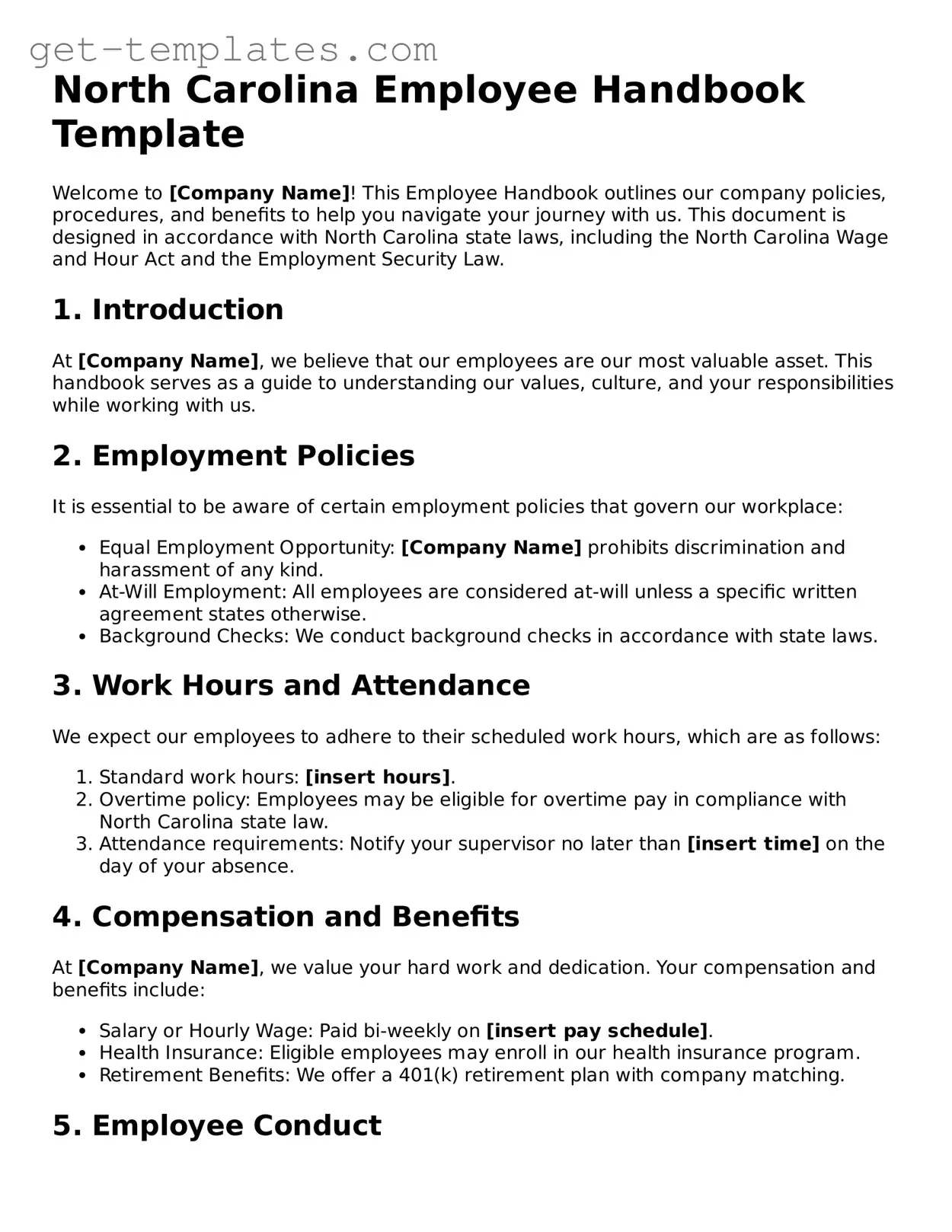North Carolina Employee Handbook Template
Welcome to [Company Name]! This Employee Handbook outlines our company policies, procedures, and benefits to help you navigate your journey with us. This document is designed in accordance with North Carolina state laws, including the North Carolina Wage and Hour Act and the Employment Security Law.
1. Introduction
At [Company Name], we believe that our employees are our most valuable asset. This handbook serves as a guide to understanding our values, culture, and your responsibilities while working with us.
2. Employment Policies
It is essential to be aware of certain employment policies that govern our workplace:
- Equal Employment Opportunity: [Company Name] prohibits discrimination and harassment of any kind.
- At-Will Employment: All employees are considered at-will unless a specific written agreement states otherwise.
- Background Checks: We conduct background checks in accordance with state laws.
3. Work Hours and Attendance
We expect our employees to adhere to their scheduled work hours, which are as follows:
- Standard work hours: [insert hours].
- Overtime policy: Employees may be eligible for overtime pay in compliance with North Carolina state law.
- Attendance requirements: Notify your supervisor no later than [insert time] on the day of your absence.
4. Compensation and Benefits
At [Company Name], we value your hard work and dedication. Your compensation and benefits include:
- Salary or Hourly Wage: Paid bi-weekly on [insert pay schedule].
- Health Insurance: Eligible employees may enroll in our health insurance program.
- Retirement Benefits: We offer a 401(k) retirement plan with company matching.
5. Employee Conduct
To maintain a positive and productive workplace, we expect all employees to uphold high standards of conduct. This includes:
- Respectful communication with colleagues and supervisors.
- Compliance with safety policies and procedures.
- Reports of unethical behavior or misconduct should be made to management without fear of retaliation.
6. Conclusion
Your journey at [Company Name] is important to us. We encourage you to refer to this handbook regularly and reach out to your supervisor or the HR department with any questions. Welcome aboard!
